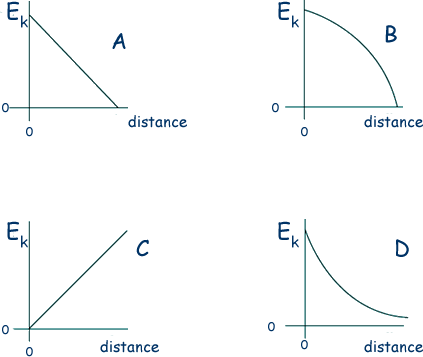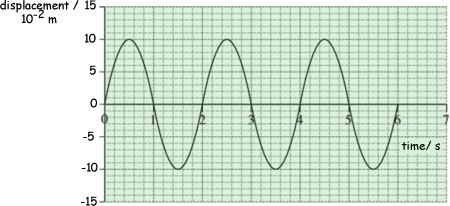Simple Harmonic Motion - Multiple Choice Questions Q11. Which one of the following statements always applies to a damping force acting on a vibrating system?
Q12. Which one of the following statements concerning the acceleration of an object moving with simple harmonic motion is correct?
Q13. When the length of a simple pendulum is decreased by 600 mm, the period of oscillation is halved. What was the original length of the pendulum?
Q14. Which one of the following gives the phase difference between the particle velocity and the particle displacement in simple harmonic motion?
Q15. A body executes simple harmonic motion. Which one of the graphs, A to D, best shows the relationship between the kinetic energy, Ek, of the body and its distance from the centre of oscillation?
Q16. The displacement (in mm) of the vibrating cone of a large loudspeaker can be represented by the equation x = 10 cos (150t), where t is the time in s. Which line, A to D, in the table gives the amplitude and frequency of the vibrations.
Q17. A mechanical system is oscillating at resonance with a constant amplitude. Which one of the following statements is not correct?
Q18. A particle of mass 0.20 kg moves with simple harmonic motion of amplitude 2.0 × 10–2m. If the total energy of the particle is 4.0 × 10–5J, what is the time period of the motion?
Q19. The graph shows the variation in displacement with time for an object moving with simple harmonic motion.
Q20. Two pendulums, P and Q, are set up alongside each other. The period of P is 1.90 s and the period of Q is 1.95 s. How many oscillations are made by pendulum Q between two consecutive instants when P and Q move in phase with each other?
|
Follow me...
|







